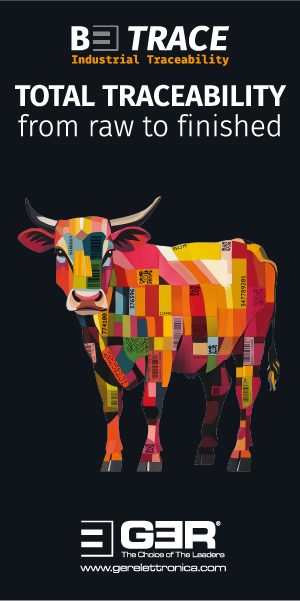Market Intelligence - 25.01.22
Macroeconomics
The news in the last two weeks has certainly been interesting. In Europe, the threat of an invasion of Ukraine by the Russian army is perhaps the most important issue at the moment.
The diplomatic activities and the verbal sabre-rattling are starting to make many people feel uneasy. For many Europeans, military action on the European continent is something considered as being from the past and no longer possible in our time. Let us very much hope that conflict can be averted by pursuing other means and that all those involved come to their senses and that violence is not viewed as a viable option.
What is astonishing is that for a long time the financial markets have taken little note of this situation. This basically means that the experts did not think the risk of a confrontation was particularly high. What has shaken the financial markets in recent days, however, is the now growing conviction that interest rate hikes will probably be part of the picture for the whole of 2022. This applies to the western economies where prices and inflation are rising much more strongly than most of the so-called experts had thought possible. Particularly in Europe, the impression is growing that the leadership of the European Central Bank is more likely to act on the basis of political calculation than to do justice to its real task of defending monetary stability. Here, too, they are playing with fire, because all parameters indicate that the full effects of the price increases have not yet reached the consumer.
In China, the opposite approach is being taken, although there is still room for manoeuvre. Statistical inflation is much lower in China, while at the same time the economy is under considerable threat from the situation on the real estate market and, of course, from the impact of the pandemic. Interest rate cuts are always a good thing in such a situation, and the Chinese government took the opportunity to lower the base rate, even if only slightly.
The stock markets reacted accordingly and in the last few days have lost some value. Interest rate- and growth-sensitive stocks in particular suffered considerable price declines.
The market for oil, which for a long time used supply problems as a price driver, is taking a break for the time being, at least temporarily. According to statistical data, the supply situation is better than one would think and therefore oil prices eased somewhat from their peaks. However, energy is still considerably more expensive than in previous years.
The gold price continues to move relatively little and after exceeding the level of $1800, there was no attack on the next larger levels here either. At the moment, inflation and interest rate fears are weighing each other up.
The US dollar is also waiting for clear indications of market changes. The interest rate policy of the US Federal Reserve certainly plays a decisive role here. The exchange rate of the US dollar rose somewhat, but did not fall below the level of $1.13 against the euro. Thus, the narrow range that has been valid for almost two months remains intact.
Leather Pipeline
One can look at the leather pipeline from many sides. Each perspective may find arguments for its position, but one thing no observer will not be able to deny is that tension and uncertainties are clearly on the rise and more and more local events are playing a weighty role, alongside universal conditions.
Many readers engage with the changes and new information on a daily basis, just as we do. However, the impression also arises that sometimes information that does not fit one’s own situation is ignored.
In addition to the indirect geopolitical risks that we have mentioned above, the start of this year is being influenced by some very regional circumstances. Others affect everyone on this planet more or less equally.
The obvious differences, in our opinion, are very much in the area of raw material supply. Slaughter worldwide varies exceptionally from region to region, and just to remind you, we note that the figures are relatively high in the Americas, stable in Europe with the seasonal decline, but have almost completely collapsed elsewhere, especially in Australia. If one then takes into account the considerable influences and difficulties on the transport sector, it becomes clear that the logistics problems have an additional and intensifying effect on the supply situation without it making any difference to the global, physical balance between supply and demand.
While beef production in America was at a very high level throughout 2021, transport problems have led to a constant increase in the difficulty not only of selling the available hides, but especially of getting them to the customers on time. Buying and selling were thus not securely supported by one very important factor. When the goods would leave and when they would arrive.
While sellers and suppliers can only react to this situation to a very limited extent, the buyer at least has the option of looking around at other supply markets and, if necessary, making back-up purchases there. In the case of the relationship between the US and China, the situation at the moment is that isolated customers with a very specific demand are currently receiving too little of the raw material they need. For the vast majority, however, the situation is quite different. Due to the lack of transport capacity, many deliveries are backlogged, and at much higher prices than the current market level.
Two things are remarkable in this context from our point of view. Firstly, one hardly ever hears of customers in Asia complaining about missing or delayed deliveries and, therefore, of having to unintentionally reduce their production. Secondly, one has the impression that some purchases in Europe were less due to need than to hedging. A similar situation, albeit for different reasons, was also observed in the southern hemisphere. Particularly noteworthy then is the information that there are allegedly even some buyers in Asia whose order books are not satisfactorily filled and are therefore preferring to resell their surplus purchases to other interested parties.
The bottom line is that the total volume of orders for finished leather must have fallen short of hopes and expectations if the lack of deliveries has not led to a major cry for help. Of course, the above is a strong generalisation and there may be problems in individual cases, but for the overall picture, assume that this analysis is correct.
Of course, this also leads to considerable imbalances in local markets. While in Europe the slaughter industry can consider itself lucky that there is still a lively and relatively extensive domestic leather industry, the same can of course not be said for the US. However, the few remaining tanners in the US will be able to profit from the current situation, because they will certainly be able to achieve certain price advantages for raw material owing to their ability to purchase and take delivery.
In principle, this position can be transferred to any other origin; one only has to look at the available quantity of raw material and the possible capacity of the leather industry. The level in Europe is still defending itself relatively well, despite the declines of the last few months. Most European suppliers at the moment - and this is not surprising - prefer to bet on the safe horse of European customers instead of currently relying too much on overseas markets. If we think back just a few years, the situation was completely different.
In the US, probably a maximum of 50% of raw material production can be sold locally or in neighbouring countries. The situation there is, therefore, different and even if shipping across the Atlantic is somewhat easier than across the Pacific, the problems of getting the goods to the port remain. This, of course, increases the corresponding price pressure and even falling hide prices and attractive levels cannot solve the problem.
Much more interesting for all of us is the question of what this means for the near future. Owing to the long delivery times and the fact that one can already be certain that this will not change in the next few weeks, two things can be assumed. Firstly, there will be no fast processing of the outstanding deliveries in the next few weeks. This leaves us with a look at the weekly published shipments, which can give us a clear indication of how much product will actually find its way to its destination. Secondly, we need a very urgent analysis of how long the leather industry and the ports in China will be affected by the holidays there for Lunar New Year, the Olympic Games and of course the pandemic. Last, but not least, the order situation for the second and third quarters plays an important role too, because traditionally these are the quarters in which leather demand and production are seasonally declining. If one takes the data and information currently available, then it is quite difficult to develop a positive scenario for the coming weeks.
A very important consideration from our point of view is also the question of what the economic situation of the leather industry will be in the coming months. The sharp drop in raw material prices in 2020, at a time of low energy prices and the subsequent rapid recovery in sales had an extremely positive impact on liquidity in the leather industry. Of course, low interest rates and the easy availability of finance also played an additional important role. In 2022, this situation is expected to change very quickly and negatively. Regardless of how good the order situation is, a higher average raw material inventory valuation versus that of 2021 and the considerably increased costs will initially put a considerable strain on the leather industry’s liquidity. Declining or delayed orders and deliveries will also play a correspondingly weighty role for turnover and cash flow in the coming months. Possible delays in deliveries will lead to a longer financing period. Experience shows that this is a very dangerous mix for many leather manufacturers.
Some are currently pointing to the increased prices of many alternative materials, and rightly so. At the same time, they expect inflation to continue and perhaps even rise. Traditionally, this has always been a booster for leather demand and prices. However, this brings us back to a problem often discussed in this space. Does leather demand react at all to price and much does demand really correlate with prices? Can leather benefit from an increase in price for alternative materials?
Everyone is familiar with the discussion, especially in Europe, about leather as a material, and these arose long before the current problems. While in Europe the demand for leather is burdened by the general public sentiment and the environmental debate, at a global level we see this less as the central problem. We have learned from the shoe industry that leather is a very difficult and demanding material to use and therefore it can be quite convenient to avoid it. An important question is whether there can be a conceivable and rapid return to the classic use of leather at all in large shoe factories. Supply chains and the requirements for documentation and control have become so extensive today that, from our point of view, it would certainly be a possibility, but we consider the willingness of the big brand manufacturers to deal with leather again as a material in the production chain to be minimal.
What started in the shoe industry seems to be continuing in the automotive industry. Without a quick shift back to the use of leather as a material, the outlook for the next few quarters does not seem particularly positive. It would take a longer period of time before decisions and changes could really take hold.
Thus, in our opinion, the general environment is likely to be very difficult for the coming months for a variety of reasons. In the long term, the many different imbalances will return to normal, but in principle we can assume that global beef production will not fall significantly in 2022. Conversely, however, this means that we would need a significant recovery in leather demand in order to process the resulting raw material in the leather industry.
As negative as the above may sound, it is not the end of the world. The raw material can and will be used in other sectors. If prices and demand drop too much, there are definitely uses in other sectors. Pet food, collagen and gelatine are the first we could mention, but it is also no secret that there are regions on this earth that also process beef skin into food.
Seen in this light, the raw materials market is protected against disaster. If fewer goods are available for the leather industry, then there is only one logical consequential problem, and that is the global capacity in the leather industry. Inevitably, if there is no longer an attractive sales market for leather in terms of volume and price, there would be no more room for all of our leather factories to remain in business. If demand for leather and the associated prices were to recover again, this whole discussion would be obsolete.
From a purely market development point of view, it is to be expected that speculative money will flow into the market when certain price levels are reached. There are still enough financially strong forces that hold the fundamental conviction that no tannery has ever gone bust because of low hide prices. The problem of not being able to sell and use the leather from a cheap hide would only arise after that.
The market for lamb and sheep nappa leather has basically already gone through this cycle in recent years. Niches stay, commodities die.
The market for split is basically very stable. Lower supply, even if only locally, leads to rising prices because the demand for cheap split exists in the leather industry and at the same time the processing capacities and projects for collagen and gelatine demand more raw material. While this was already apparent for collagen and gelatine, the market for wet blue split has only really developed positively in the last few weeks. It is a low-priced material and, as a finished product, can be called leather.
In the case of sheepskins, the situation is also developing very differently from sector to sector. Here, too, good, high-quality products that are superior to plastic substitutes are currently receiving very good demand. All products that can be made from fine and dense wooled skins are not finding enough qualified raw material at the moment. Prices are very stable and even rising, although the old saying applies here too: more money does not buy more goods if the goods are not available.
Therefore, in the absence of sufficient raw material, experiments with possible alternatives are taking place here and there, and these can only be successful if customers are willing to accept certain restrictions and differences. All other raw materials that can be used in the luxury segment for nappa are also attracting more than sufficient interest but the exact opposite is true for everything that can only be used for standard garment leather.
We think it is urgently necessary to deal with these things. In the next few months we will enter a phase that is likely to prove decisive for the next few years. Everyone will be delighted if things turn out well and leather experiences the renaissance it indisputably deserves. The consumer might even be prepared to go down this path, but it depends entirely on the willingness of the major global consumer goods manufacturers to work with leather again and choose it as a material. In our opinion, this will require a specific trigger, which, unfortunately, we cannot see at the moment.












